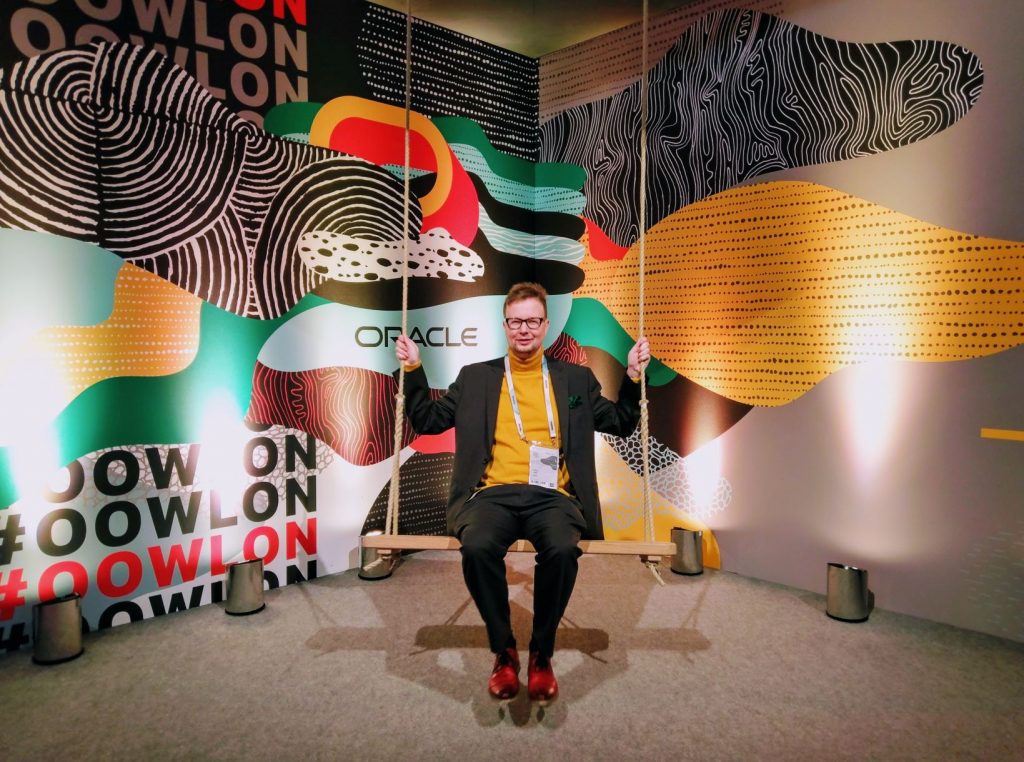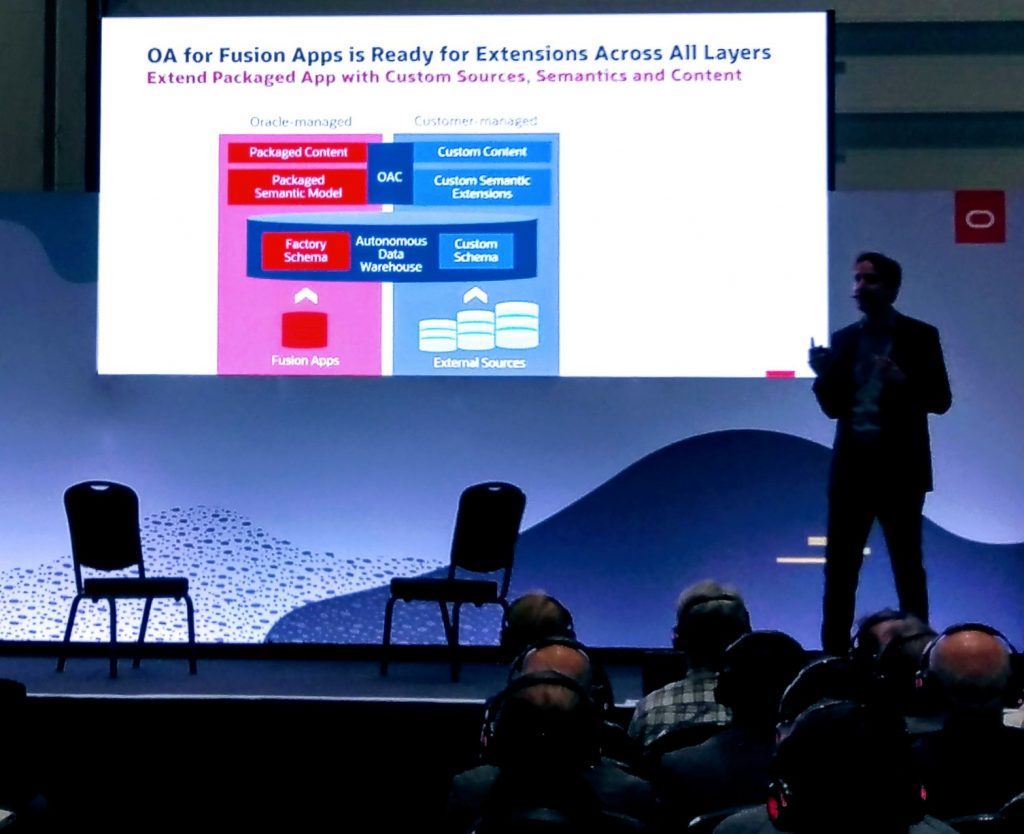The nice thing when attending a conference is that you get insights you did not look for. After rushing from London City airport to the London ExCeL exhibition center yesterday morning – around 15 minutes walking time – I made it to the second half of Stefan Schmitz’s presentation “Oracle’s Next Generation of Analytics Applications”.

The presentation was about Oracle Fusion Analytics applications. To my surprise, my learnings relate less to technology or application know-how but in the change of business model when moving away from on-prem standard software to cloud software and software as a services (SaaS)
On-prem standard software means:
- you buy a software package
- you and/or an integration partner customize the software to your company’s needs
- if there are upgrades, you and/or the integration partner reconfigure the software
It is an ecosystem. The software vendor generates revenues from license fees and the integration partner from customization, maintenance, and consulting services. The more customization options, the more customers see their needs reflected – and the higher the revenues generated by customization projects. However, moving to the cloud and to Software as a Service has strong impact on this relationship.
If you are a software vendor selling standard software, upgrade project costs and problems are something to look at, but if the customer customized too much, it is the customer’s job to get the funding for upgrade projects and to deal with technical issues. In contrast, if you offer software as a service, upgrades are now a major task for the SaaS provider. They have an incentive to be more restrictive and to reduce the customization option to ensure smooth upgrades. And I became aware of this when Oracle explained how they deal with customization now:
They have a predefined schema (factory schema) and predefined KPIs. You cannot change anything. Certainly, you can define (separately) your own customer schema and add more data and evaluations for your context, but the Oracle and customer “areas” are clearly kept separately. By the way, this is perfect to ensure that controllers and managers can differentiate costs for the SaaS solution itself and for company-specific customization.

And, as a small add on, they mentioned that with all the data being in the cloud, they can provide benchmarking. If everything is standardized, you can compare e.g. financial KPIs of your customers. You do not need a benchmarking company collecting and cleaning and analyzing data from various companies. For Oracle, it is a nice side effect, for the benchmarking and consulting companies, this is a storm to come.
While the conference will end in a few hours, there are still some more topics to write about the next days. Tomorrow, you will read some insights about client experience, marketing, and technologies …

Published 13.2.2020
All my Oracle Openworld London 2020 articles:
- Oracle Openworld Learning 1: Moving your applications to the cloud and moving to a cloud application is something completely different
- Oracle Openworld Learning 2: How the Cloud impacts the Software Customization Business
- Oracle Openworld Learning 3: The True Value of Chatbots
- Oracle Openworld Learning 4: The Oracle Database, ML, and Bitcoin – plus how Computer and Emotions come together